
Review on 🔋 Upgraded Topsolar 120W Portable Foldable Solar Panel Charger Kit for Power Station, Generator, Cell Phones, Camera, Lamp, 12V Car, Boat, RV Battery - Dual USB Ports & 19/14.4V DC Output by Alex Jones

Robust, light and very powerful - perfect for the Goal Zero Yeti!
I have a 120w panel and a 60w panel so I can compare them. Both are identical except that the 120W panel has twice the panels and folds into 4 sections, while the 60W device is a clamshell. They are very stiff, with excellent build quality and built in handles cut from the material. The top of the panels is lightly textured and does not appear to scratch or peel like regular folding panels. The kit includes a large accessory back that connects to a 19V bullet socket - MC4, Alligator, Cigarette, USB and a range of accessories compatible with most batteries. My only complaint is that the MC4 and Alligator have fairly thin 18 gauge wire and while it's a very short run I wish they were thicker. I use these to charge a Goal Zero Yeti 1000 lithium battery. Use the 8mm yellow tip and it works great. I have a couple of Goal Zero Boulder 100 portfolio panels that I used as benchmarks to see if the much lighter, smaller foldable panel could perform as well as the heavier glass and aluminum panels. Short answer: Absolutely, and I think it's a much better option for a portable system like the Yeti. I could easily carry the Yeti and both foldable panels (60+120W) on a trip while the GZ panels are quite large and heavy. The panels seem to be able to handle a bit of rain but the junction box is the weak link of all panels so I wouldn't get too wet. The main benefit of a glass panel is that it dissipates heat better and generally lasts a long time (20-30+ years) whereas a folding panel might not last as long, but only time will tell, I'll update my review. over time. I tested them in mid-March at 12:40 p.m. in Connecticut on a clear-sky day with minimal haze, tilted at a 45-degree angle to the sun. When connecting the panels to the Yeti's onboard PWM ports and optional 8mm MPPT module, I measured the following for maximum power on the Yeti's screen: 60W TP Solar Panel - 45W MPPT (37W PWM) – 75% of rated power . with MPPT120w TP solar panel - MPPT 86W (PWM 77W) - 72% of rated power with MPPT100w Goal Zero - MPPT 77W (PWM 65W) - 77% of rated power with MPPTGoal Zero Panels spend a little more for their ranking than these panels, but these Deviations are within the margin of error for my tests, since the angle of the panel or the clouds can cause a few percent either way. They passed very good tests and were equal between the two panels. If you look at the photos you can see how thin they are. I kept the 60w and 120w panels alongside the GZ panels and together they (180w) make up less than half of one side of the GZ panels so they are probably 20% thick and much smaller overall are. For a portable setup, I would choose them every time. USB charging was very fast, although there is no USB-C output, only two USB-A. The only thing I complain about is that they don't have a stand, so you have to lean them against something to tip them, or lay them flat and pick them up. exit hit. The carrying bag is a bit tight for the 120w panels but I honestly wouldn't even use the bag as the panels are folded to protect them (unlike the GZ panels which have the solar panel when folded lies outside). I bought a pair of collapsible document stands that tip well and keep them secure so this is a good option. Overall I really like this type of folding panel better than the fabric covered versions which feel like toys. They are also better than large flexible panels as they are flexible and easily damaged. This design essentially gives you the benefits of a flexible panel with the compactness and protection of a folding panel without compromise. Super impressed. The only question is what size to take. The 120W panel offers better value for money and doesn't feel much heavier or thicker than the 60W version, but it does require a little more coordination to fold in and out as it's shaped like a W . The 60W version simply unfolds and you're ready to go. Either is fine, just depends on your use case, but I always recommend more panels as you never get close to the rated power.
- speakerphone
- I vaguely remember
New products
Comments (0)
Top products in 🔌 RV Power & Electrical Parts
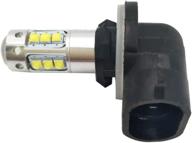
Premium 80W LED Headlight Bulb For Polaris Ranger Sportsman ACE RZR XP X2 400 450 500 550 570 700 800 850 - High-Performance Super White Driving Lights By AUTOVIC

20 Review
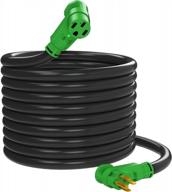
Effortlessly Extend Your RV Power With RVMATE'S 50 Amp 25 Feet RV Extension Cord – LED Indicator, ETL Listed, And Convenient Plug-In Handle Included!

16 Review
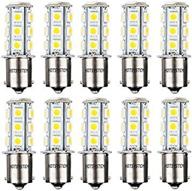
HOTSYSTEM LED Light Bulbs 1156 1141 7506 P21W BA15S 18-5050SMD For Car RV SUV Camper Trailer Trunk Interior Reversing Backup Tail Turn Signal Corner Parking Side Marker Lights(WarmWhite,Pack Of 10)

28 Review

Air Compressor Lite

58 Review
Another interesting products
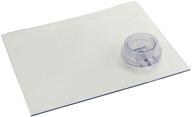
🚪 Upgraded RV Screen Door Slider Panel with Easy-Push Knob Opener

10 Review

12V DC Electric Trailer Jack - 2000Lb Lift Capacity With Hard-Wire Connection

12 Review
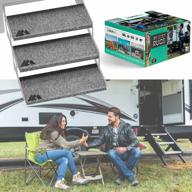
3 Pack 18" LATCH.IT RV Step Covers For Camper And RV Stairs - Fits 8-11" Depths - Keep Your RV Clean With Step Rugs

17 Review

Protect Your RV With LATCH.IT Shade: 7'X9' Zippered Screen Awning For Ultimate Wind Protection And Privacy.

15 Review

